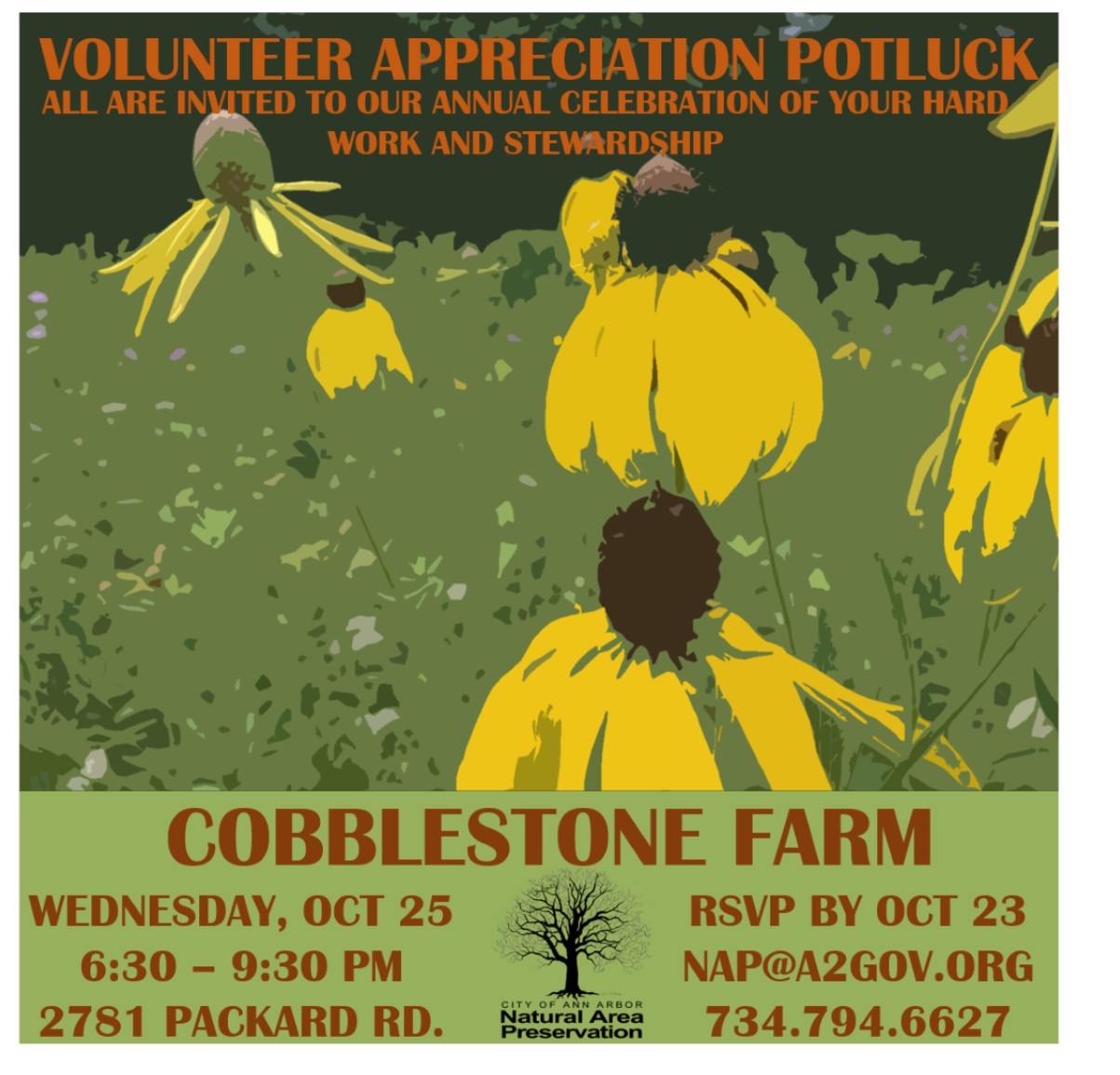Natural Area Preservation News
Protecting and restoring Ann Arbor's natural areas and fostering an environmental ethic among its citizens.
Volume 22, Number 3
Autumn 2017
Park Focus: Brokaw Property
Amy Wells, Conservation Worker
The City of Ann Arbor will be opening a new park soon. The park has not yet been named but is temporarily called the Brokaw Property. City Council voted to accept the donation of this 24.45-acre piece of land in October of 2013, but an old house on the property had to be demolished before the site could be deemed safe. That wasn't able to get underway in earnest until this past spring. Demolition is now complete, and NAP will begin ecological restoration efforts and work to convert this old homestead into a public park. Funding for the maintenance, demolition, and restoration efforts are provided by an endowment that was received along with the land.
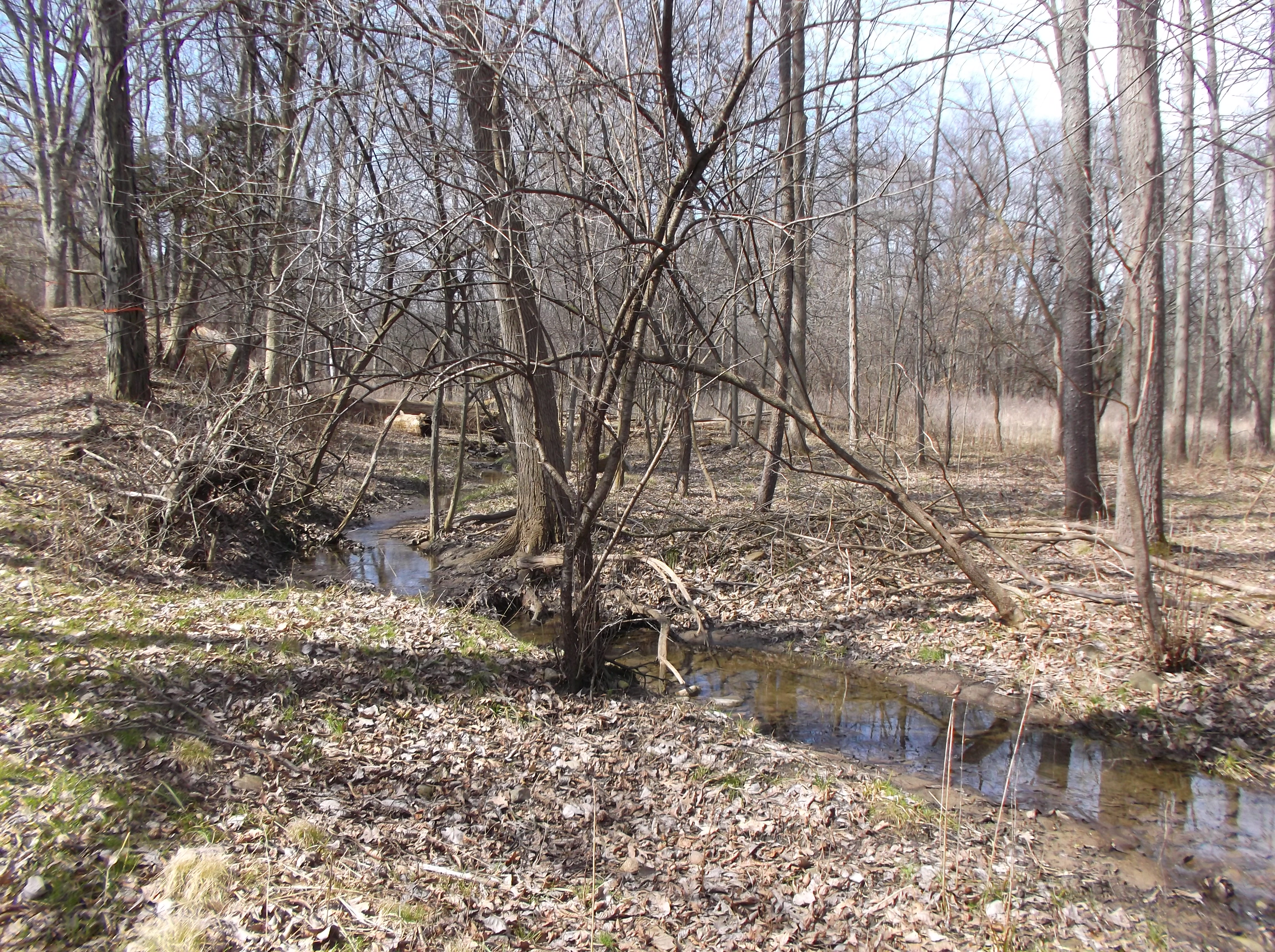
This lovely but unnamed stream flows through the Brokaw Property.
NAP has some big plans for the Brokaw Property. Our stewardship team will design a system of trails in a way that will minimize erosion, protect sensitive areas, and take visitors to see the interesting features and variety of ecosystems the park has to offer. NAP also plans to enhance wildlife habitat on the site. The demolition contractor worked with NAP to establish a snake hibernaculum in the rubble of an out building's old foundation. Buried tubes with holes cut in them along with various sized stone will provide safe places below the frost line for snakes to hibernate over the winter. The oak-hickory forest found here is already an important home for avian wildlife. Our ornithologist, Juliet Berger, visited last summer and saw scarlet tanagers; rose-breasted grosbeaks; indigo buntings; and red-bellied, hairy, and downy woodpeckers.
Due to the variety of habitats it provides, the Brokaw Property has a great diversity of plant life. Botanist Bev Walters did a survey of the plants at Brokaw and identified three types of plant communities: a wet mesic forest, a mesic forest, and an old field.
In the wet mesic forest, along the intermittent stream, you'll find plants that thrive in saturated soils such as swamp white oak, bog clearweed, skunk cabbage, and swamp goldenrod. There are many attractive woodland wildflowers such as jewelweed, jack-in-the-pulpit, and its less common relative, green dragon.
The mesic forest is higher on the hill where the soils are drier. In addition to the gorgeous views of the Huron River, you'll find shingle oak trees. These are particularly noteworthy because they are the only native oak with "entire" leaves, meaning they are not lobed. The leaves are oblong with the bristle-tip characteristic of the red oak family and are dark green and glossy with a paler, fuzzy underside. They are named shingle oaks because early settlers used them for shingles because its wood is easily split into thin sheets. The Brokaw Property is one of only two parks owned by the City of Ann Arbor that has shingle oaks. In total, this nature area has seven different species of oak, so check it out if you're trying to learn all of our native oak trees!
The old field habitat, in a pocket within the wet mesic forest just north of the old house site, is a great place to stop and smell the wildflowers, especially the wild bergamot and common mountain mint. You may also encounter St. John's-wort, common milkweed, and purple meadow rue.
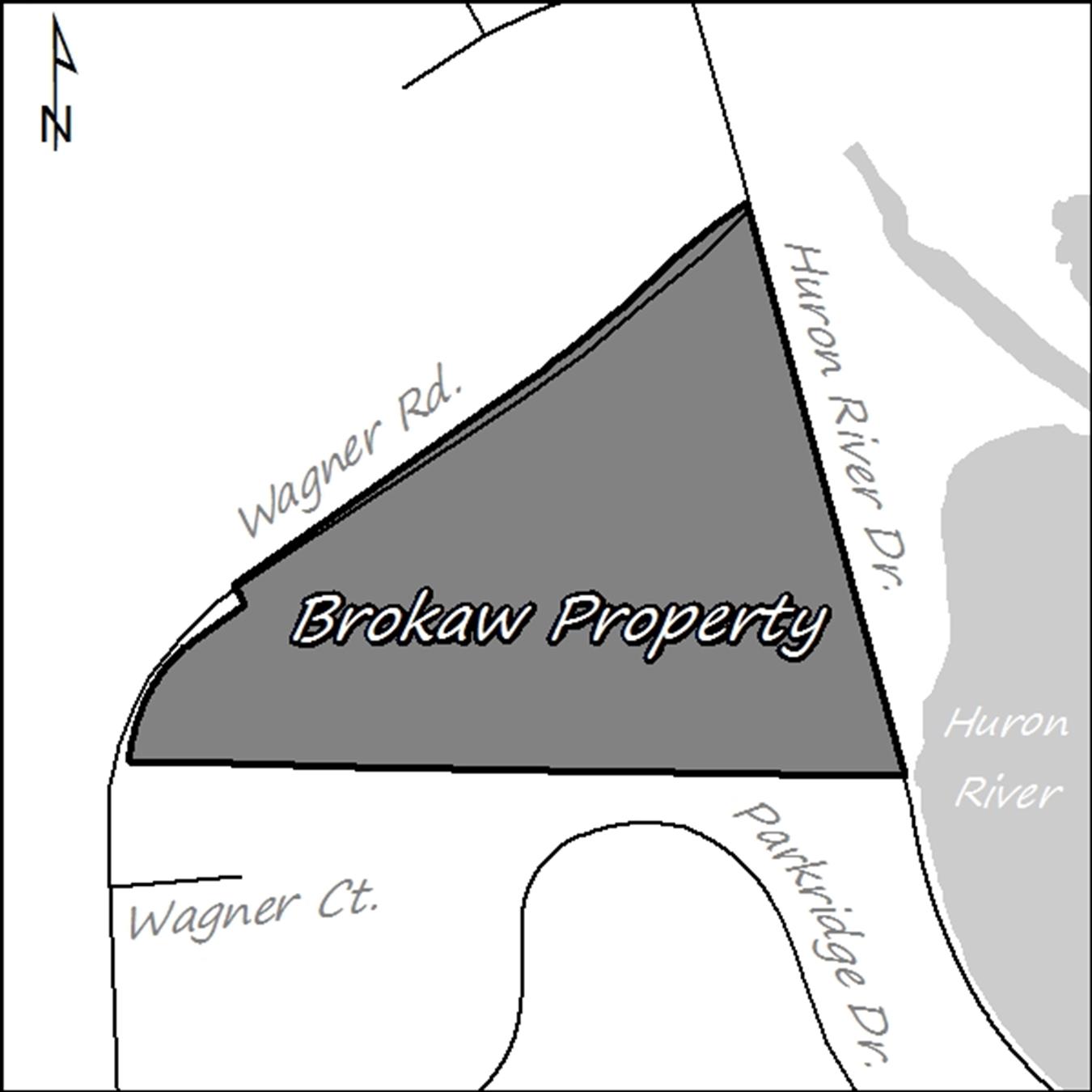
The Brokaw Property hasn't received active land management in recent years, so invasive species are common. However, the buckthorn and honeysuckle don't make a dense hedge or thicket in most areas, so you can see through the forest and easily make your way around. Stewardship Specialist Mike Hahn shared his plan for restoration efforts at the Brokaw Property. As with our other parks, we will use integrated pest management principles to guide a multifaceted approach to reduce invasive species. For example, we will reintroduce fire to suppress the invasive plants and stimulate the germination of native plant seeds; we will specifically target the invasive plants for removal with cutting, pulling, and judicious use of herbicide; and we will collect and spread seeds from native plants that are already on-site. Our priority will be the areas near the stream and reducing competition for the historically dominant oaks and hickories. Areas with the most disturbance, such as the area where the house stood, will be lower priority since the likelihood of native plants coming back is lower.
NAP is eager to get to work at the Brokaw Property. Personally, one of my favorite elements of conservation work is seeing the dramatic, positive changes our efforts have on landscapes. Being able to recall what a park was like before significant restoration work began gives me added satisfaction when I enjoy the park later. Since NAP depends on volunteers and the support of Ann Arbor citizens, our work is your work too, so keep an eye out for the opening of the Brokaw Property. You'll want to see how the park improves as well.
Coordinator's Corner: Timelessness
Dave Borneman, Natural Area Preservation Manager
This past summer, Kate and I honeymooned in Alaska. In fact, we were there during the solstice, so we had more daylight than any other time of the year. Officially the sun set about 11:30, but its low angle kept it just barely below the horizon. So the sunset would last for hours, and move across the northern sky from west to east until it slowly changed into an equally long sunrise only four hours later.
The outcome for us was that we completely lost track of time. It wasn't that we just ignored our watches and relied on the rhythms of nature. No, the normal rhythms of nature didn't exist! I remember the first night we stayed up to watch the sunset. I happened to glance at my watch and realized it was 2:30 in the morning, which was really 6:30 A.M. back on Eastern time. Our schedule was completely off!
Because we couldn't rely on the sun to tell us what time it was, and we didn't want our clocks to dictate our schedule, we dropped our schedule all together. Sleeping and waking periods merged effortlessly into each other, and back again. If we were sleepy, we took a nap. If we weren't, we stayed up, regardless of the actual clock time. I have a hard time now remembering what "day" we did specific activities because the term "day" lost its meaning. It was really quite a wonderful experience, and it created a sense of delicious timelessness that I'd never before experienced.
I've tried to bring as much of that timelessness as possible back here to my "real life." It's obviously much harder to do when the sun (or the work alarm) so loudly screams "MORNING!" But I'm not yet ready to give up my quest for a less-structured schedule in my everyday life. I try to eat when I'm hungry, even if it's not mealtime. I nap when I'm tired, if there's any way to make that happen during the work week, or at least on the weekends. And I get outside to enjoy nature whenever the mood strikes me.
Granted, my job makes it relatively easy for me to access nature frequently. But I bet creative readers could find new ways to incorporate more nature into their everyday lives too. Walk to work, or take a quick stroll outside during lunch, or whenever you need a short refreshing break. Have your next staff meeting outside. Make that phone call to your mother from a park bench, rather than from your couch.
Even better, get out to your favorite natural area at a different time than you usually do. Take an early morning walk – really early, before the sun comes up. Or go for a night hike and enjoy animal sounds you never get to hear on other park visits. Stop by that park you drive past on your way home from work and let a hike there help you unwind from your day. Read a book or study while sitting in the woods. Our natural areas have many different faces throughout a 24-hour period, and most people only see one or two of them on their regularly scheduled visits. Change things up a little and I bet you'll discover something new about your favorite parks. In doing so, you'll be bringing a little more timelessness into your own life.
Gypsy Moths: They're back, but not for long!
Tina Stephens, Volunteer and Outreach Coordinator
Perhaps you recall that hot dry summer in the early 1990s when our trees were covered in leaf-eating caterpillars. Many trees were defoliated, droppings littered the ground, and munching could be heard in the forest. The strife that summer was due to the gypsy moth caterpillar, Lymantria dispar, which was inadvertently introduced to the United States by an amateur entomologist in 1868. The bad news is they're back; the good news is we now have a biological control on our side.

Gypsy moth caterpillar
The gypsy moth caterpillar is pretty neat looking and not too hard to identify. The caterpillar has a yellow head with black eye spots that are reminiscent of raccoon eyes, five pairs of blue spots down its back followed by six pairs of red spots, and spiky clusters of hair protruding from its sides. There are a few similar-looking caterpillars, but the gypsy moth caterpillar does not build a tent or a web like their look-alikes. The gypsy moth itself is unremarkable in appearance. The female is a light cream color, the male is tan, and they both have brown wavy patterns on their wings. Notably, the females do not fly (despite having wings) and are slightly bigger than the males. The females lay their eggs in fluffy, tan masses on the bark of trees. Gypsy moth caterpillars, female moths, and eggs are most often found on oaks but they will use a wide variety of trees.
There are several choices for combating these destructive insects including cultural practices like removing woody debris, mechanical controls such as scraping off eggs, and several insecticide options. Perhaps the best option that was added to our arsenal since the outbreak of the early 90s is a biological control. Researchers had been aware of a fungus, Entomophaga maimaiga, that caused a gruesome death for the gypsy moth caterpillar in their native range in Japan. Attempts were made to introduce the fungus to North America several times throughout the 1900s but it wasn't until 1989 when its effectiveness was first noticed. After a bit more research, the fungus was released here in Michigan and most years it does a good job of controlling gypsy moth infestations.
Despite the presence of the Entomophaga maimaiga fungus, we have seen a larger than usual population of gypsy moth caterpillars and moths this summer. Unfortunately, the fungus needs moisture to reproduce. Since the spring and summer of 2016 were quite dry the fungus hasn't been able to keep up with the population. Hopefully the wet weather this spring has caused a fungus resurgence that should slow the gypsy moth population growth this year as well as next.
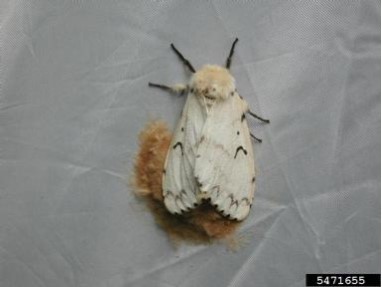
Female gypsy moth laying eggs
Photo credit: Leslie J. Merhoff, University of Connecticut, Bugwood.org
You can also keep the gypsy moth population from growing by removing any egg masses you find on your property. These masses are tan (but may bleach white) and have a felt-like texture. They can be found on anything outdoors, living or not. To remove, scrape the egg masses into a paper bag and burn the bag, or scrape them into a can and soak them in soapy water for a few days. This can be done anytime before they hatch in April or May.
So, while gypsy moths are back for now, they won't be back for long.
NAPpenings
Welcome new Park Steward!
Jason Shellhaas
Dolph and Lakewood Nature Areas
Thank You!
Many thanks to the groups who volunteered with NAP recently. We could not make such a difference without you!
- Ann Arbor Academy
- Ann Arbor Open School 1st graders
- Ann Arbor YMCA YVC
- Community High School
- FedEx, Belleville
- Huron High School
- Rudolf Steiner School of Ann Arbor
- Skyline Environmental Club
- Student Volunteer Union
- Varsity Apartments Staff
The Science, Practice, and Art of Restoring Native Ecosystems Conference
January 12-13, 2018
The Stewardship Network presents this annual conference at the Kellogg Conference Center, Michigan State University in East Lansing. Presenters cover a wide range of topics including environmental justice, traditional ecological knowledge, watershed conservation, and much more! See www.stewardshipnetwork.org to register or for more information
Staff Updates
Congratulations...
 Dave and Kate
Dave and Kate
NAP Manager, Dave Borneman was married to Kate Krauss on June 17 at First Unitarian Univeralist Congregation of Ann Arbor. The couple honeymooned in San Francisco and Alaska immediately following the ceremony, Kate is the Chief Operating Officer at the Fair Food Nework and is a welcome addition to the extended NAP family.
Farewell...
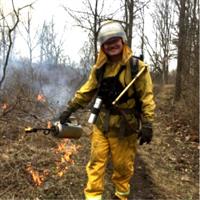 Alex Sasyk
Alex Sasyk
Field Crew
Even though my time at NAP was short, I am still very grateful for all the memories and experiences I gained while working here. I have accepted a job with The Nature Conservancy as a Dune Restoration Specialist in which I will be working on the removal of invasive Baby's Breath at Sleeping Bear Dunes. While I'm sad to be leaving NAP, I am excited to start a new chapter in my life. However, this is not a good bye, as I plan to return as a volunteer to assist in the work to help protect and restore Ann Arbor's natural areas and to help foster an environmental ethic.
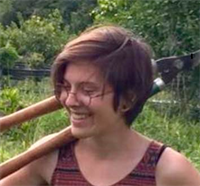
Madison Roze
Outreach Assistant
I want to thank everyone at NAP so much for the opportunity to work towards improving the natural areas of Ann Arbor. It was a blast conducting controlled burns with staff and volunteers, and a great opportunity to learn about leadership with such an awesome team. I look forward to using skills gained at NAP to propel myself towards future ambitions. Thanks for a wonderful season!
Welcome...
 Alex Cherry
Alex Cherry
Workday Coordinator
I recently graduated from the University of Michigan with a degree in Environmental Managment and Political Science. I am excited to be part of an organization that is so involved with the Ann Arbor community. My past occupations have involved teaching people about the value of nature and reaching out to groups to help environmental causes. Being a part of NAP allows me to coalesce these skills by finding new methods to get more people involved with our parks in bigger ways. I hope to meet many of you out in a park this year!
 Rebecca Snider
Rebecca Snider
NAP Communications
I fell in love with the outdoors as a Biology major nearly 20 years ago. Since then I have earned a Masters degree in Parks and Resource Managment and worked as an environmental educator in museums, zoos, and nature centers. In 2008 I moved to Ann Arbor and I've been having fun exploring the city's parks and natural areas with my two boys. I'm delighted to join the staff of NAP and work with volunteers who share my love of nature.
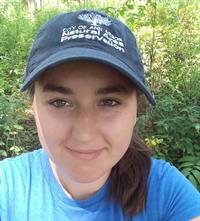
Kayla McGuire
Field Crew
I have been interested in ecology since high school but found conservation as a passion during graduate school. I am completing a Master's degree from EMU and conducting research on the impacts of road salt on carbon movement in wetland ecosystems. This research and volunteering at the Southeast Michigan Land Conservancy have taught me about the practical applications of conservation. Working with NAP will allow me to show Ann Arbor how conservation practices are done and that the goals of conservation can be pursued by anyone.
You're Invited!
